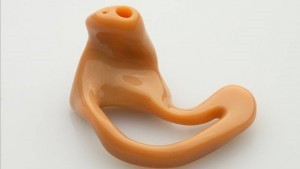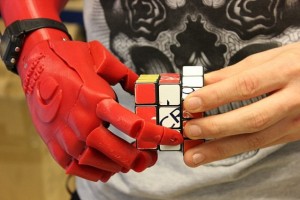3D printing has transformed the landscape of the assistive technology industry—making it faster, easier, and cheaper to build personalized devices to benefit those individuals with disabilities. Here are some of the ways 3D printing has revolutionized this arena:
Hearing aids
The story of how 3D printing transformed the production of hearing aids is almost a fairytale. It’s taken a fairly labor-intensive process and automated. In this process, 3D scanners are used to create an ear impression, a technician fits the impressions with different shapes or models, and the final shell is manufactured using a 3D printer. Today, it takes only day to produce the final product. Because of increased efficiency and output of this system, almost all hearing aid shells and molds are made via 3D printing technology.
Prosthetics
Going along a similar storyline, 3D printing is also increasing the accessibility of prosthetics for those individuals suffering from motor disabilities. Recently, a UK startup, Open Bionics, announced the creation of a 3D printed robotic limb that can be assembled in under 40 hours and costs around $1500, less than half the cost of the cheapest robotic limb on the market. This limbs also have sensing and motor abilities similar to those of more expensive bionic devices.
Educational Tools for the Visually Impaired
Finally, 3D printing is changing the way children with visual impairments can learn. There is an increasing number of tactile charts, diagrams, and images that these blind children can “see.” While such visual aids have been around for some time, it is only due to the commercialization of 3D printing technology that these tools be affordable for the schools and the students they serve.
And these 3D printing innovations for assistive technologies are only just the beginning.


